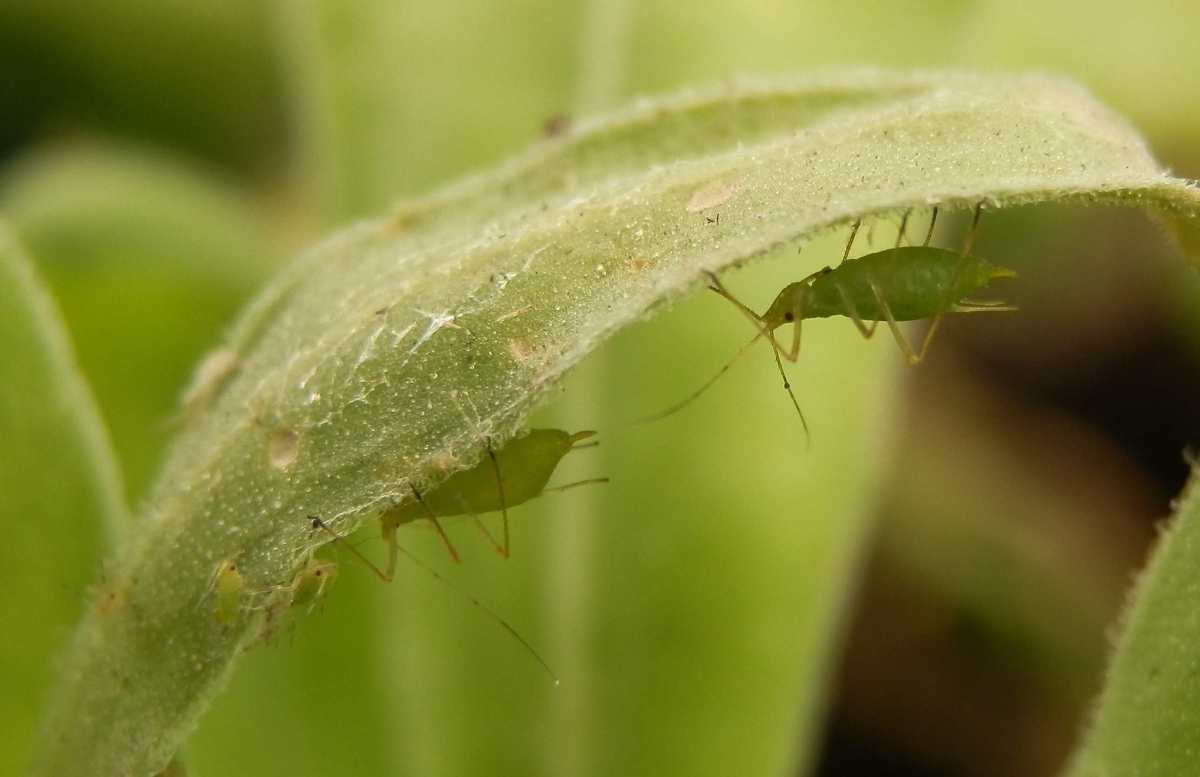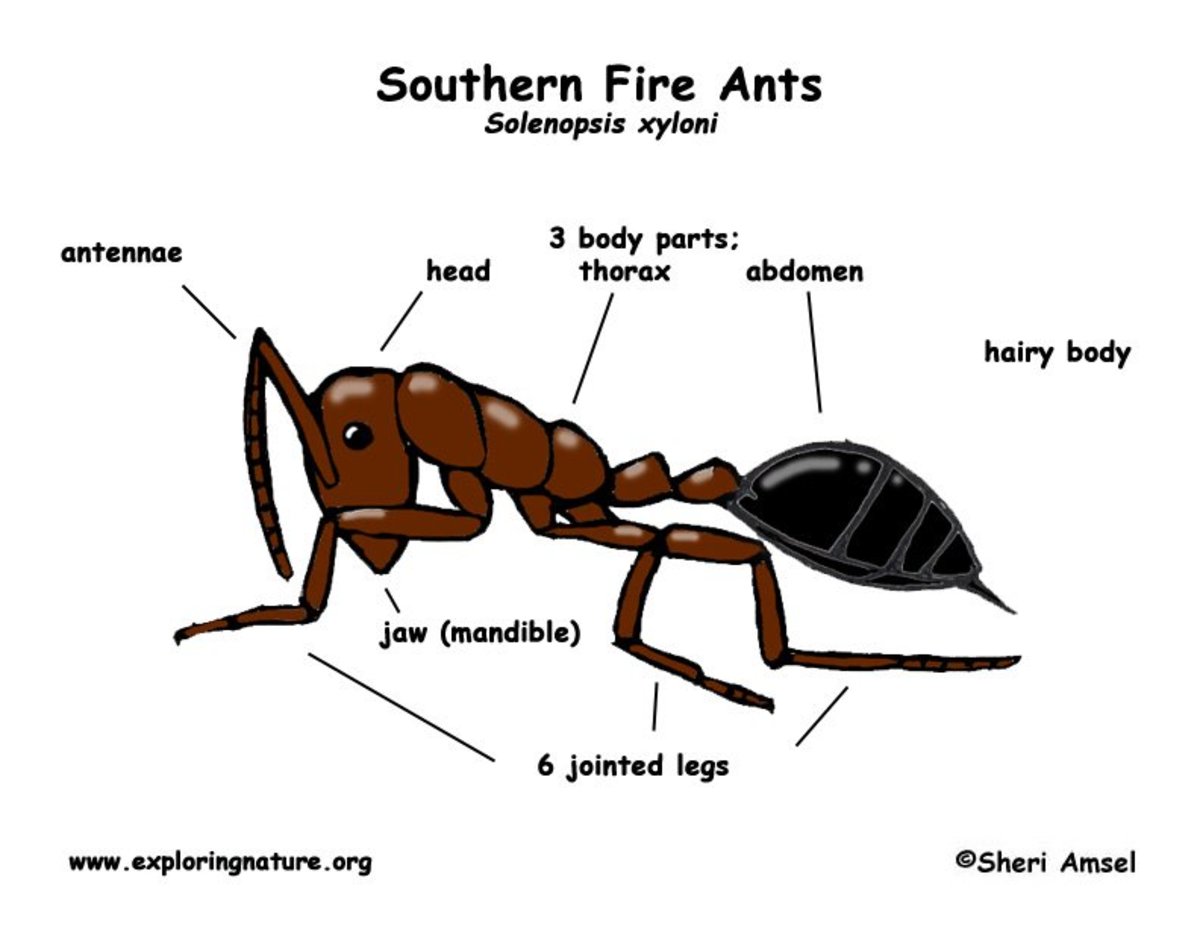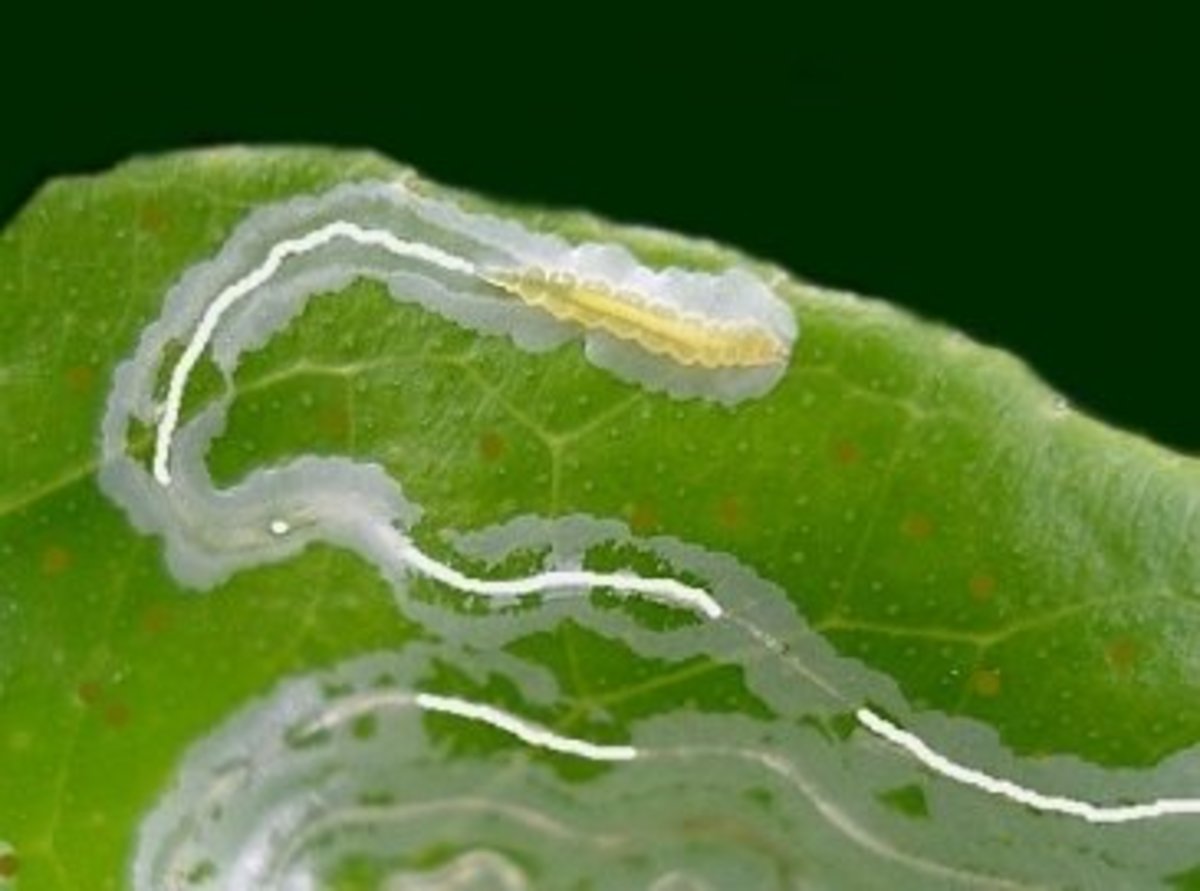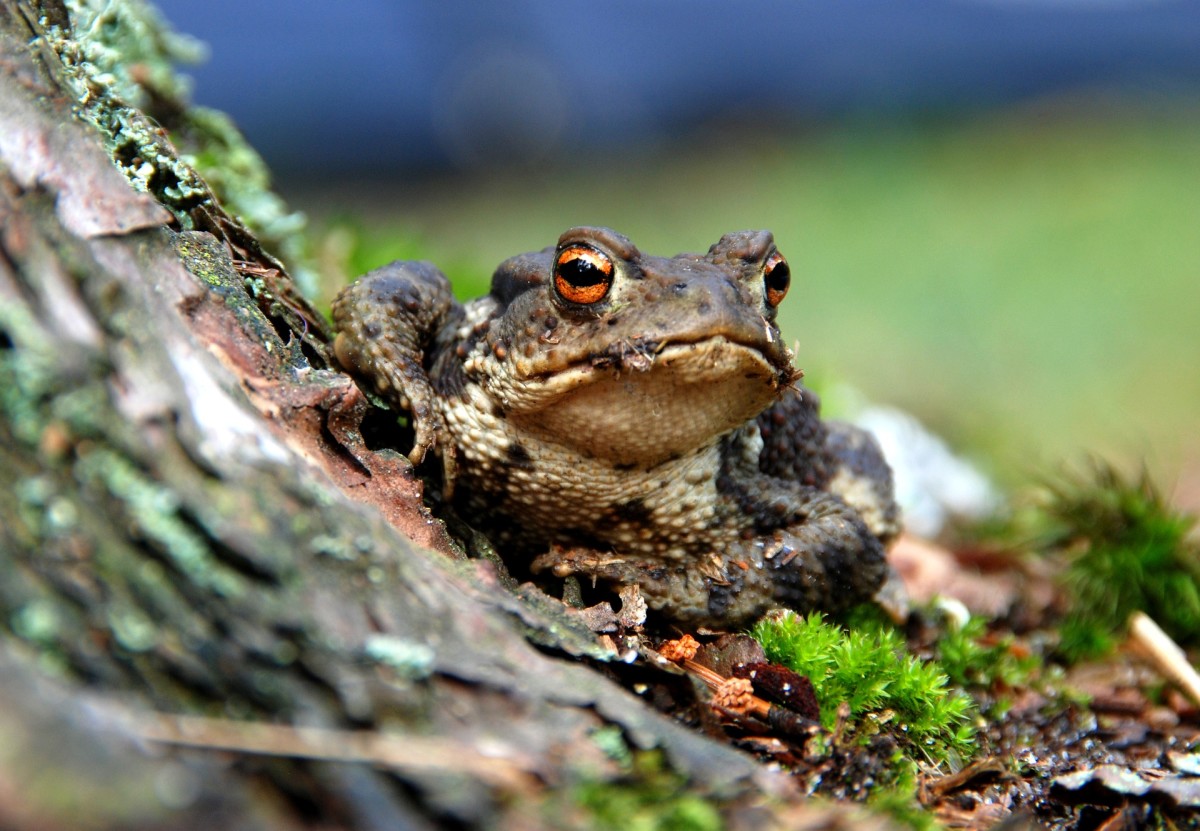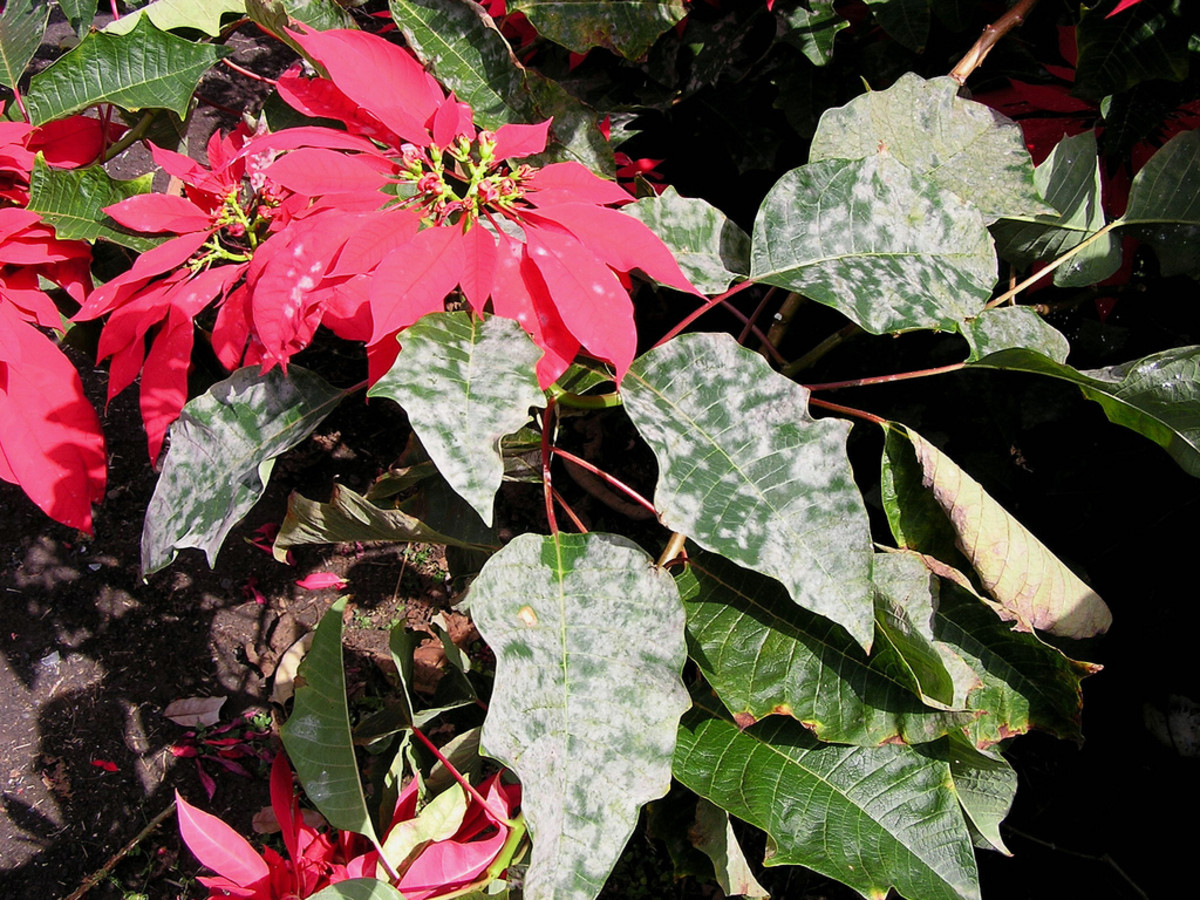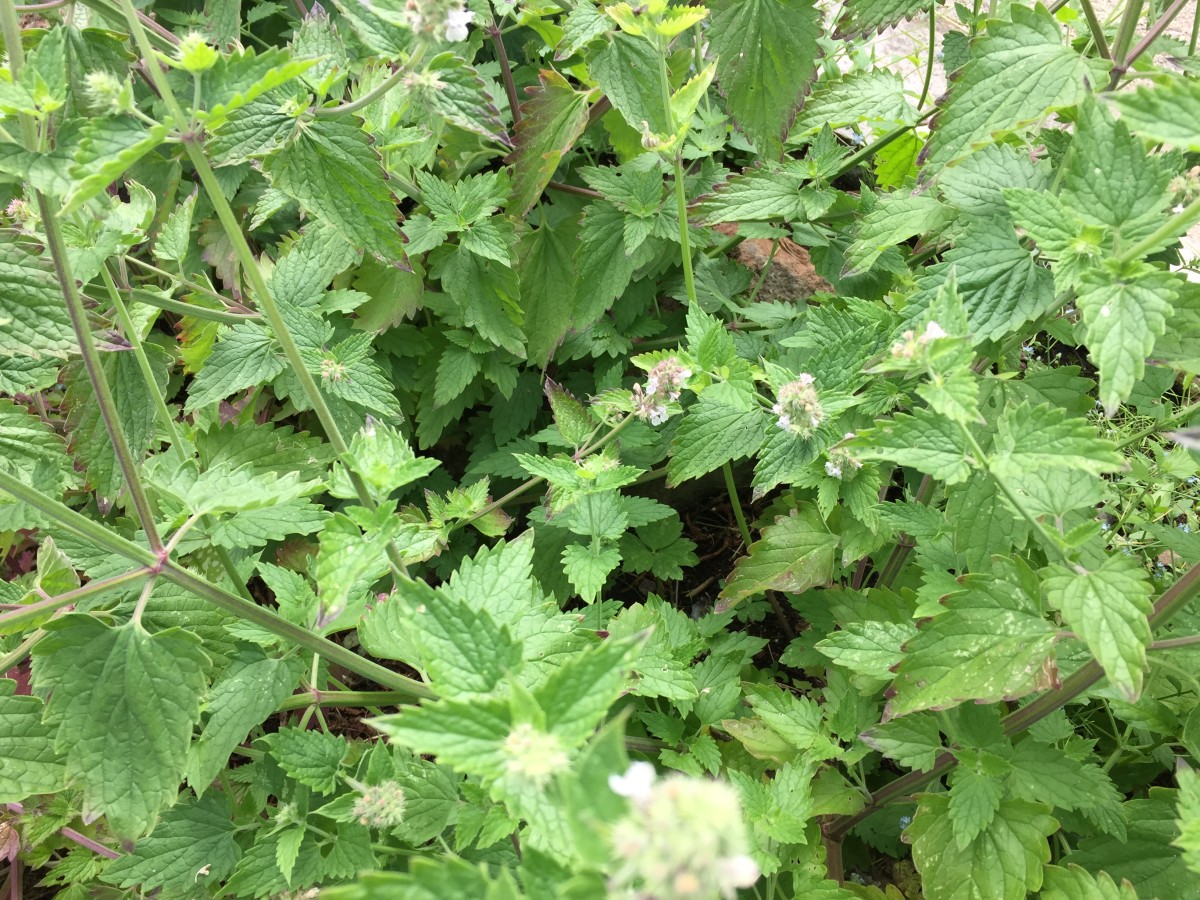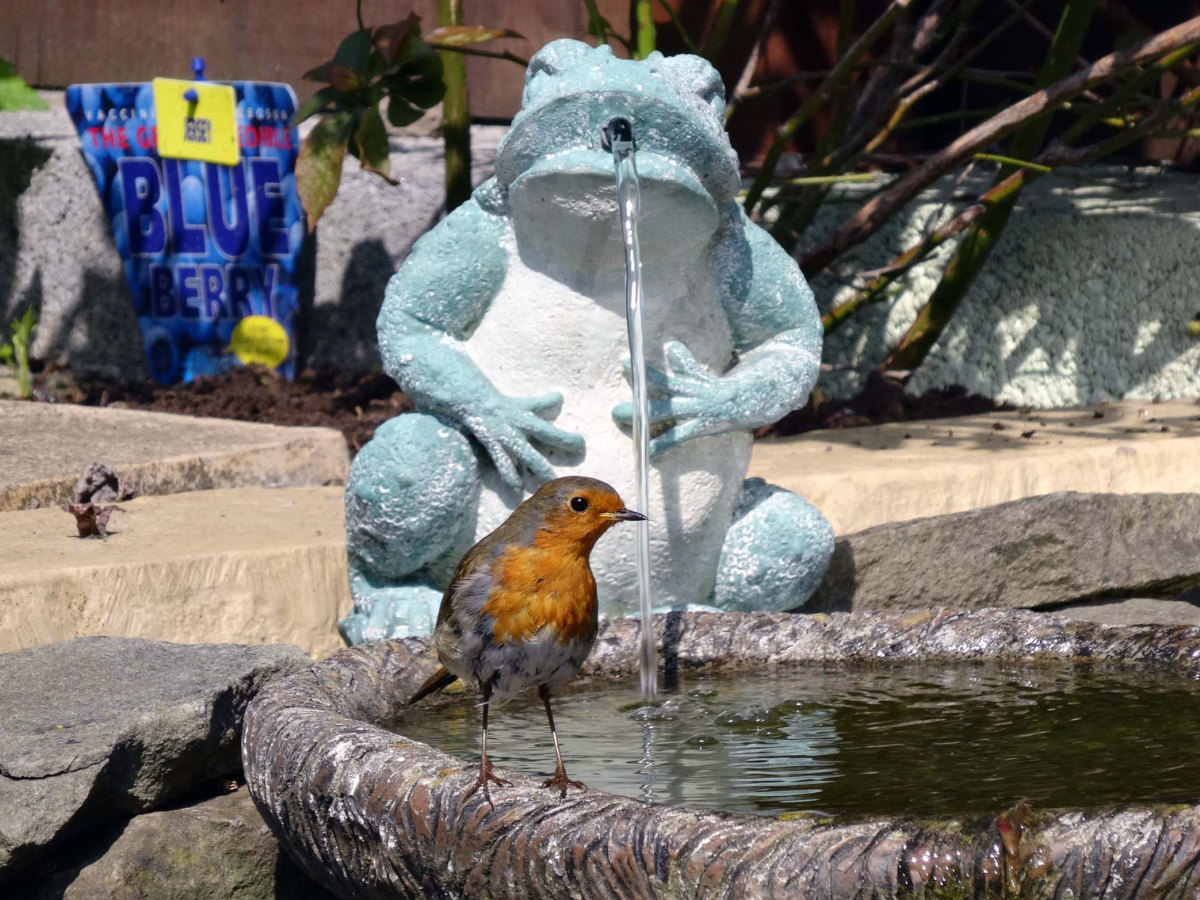- HubPages»
- Home and Garden»
- Gardening»
- Organic Gardening
Organic Aphid Control Methods
Aphids can be a real pest in the garden. They tend to cluster on the flower buds and shoot tips of plants and can cause deformation of new leaves, flower loss and defoliation. They can grow in numbers seemingly overnight and before you know it you can have a major infestation on your hands. Prevention is always better than a cure, so it's good to keep your plants at optimum health by keeping them well mulched, watered and fed so they can best withstand an aphid attack. The best way to control aphids is to look out for and nurture the beneficial insects that eat the aphids for you and grow companion plants that repel aphids. Use organic sprays minimally, responsibly and only as a last resort.
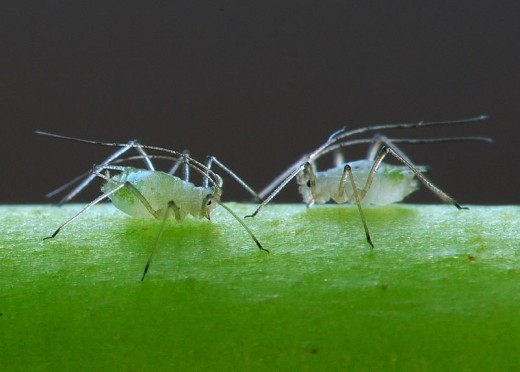
Beneficial insects for aphid control
There are many insects that will happily eat your aphid pests for you and it is worth learning to recognize these so you don't mistakenly kill them. The three most common beneficial insects for aphid control are ladybirds, hoverflies and lacewings. These beneficial insects can be attracted into your garden by not using insecticide spray and by planting various plants that provide habitat and a food source (nectar) for adult stages. An ideal way to attract beneficial insects is to intersperse vegetables, herbs and flowering plants throughout your garden to provide a varying mix of habitats and food sources for them.
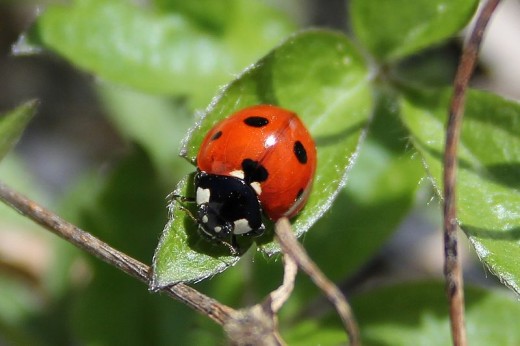
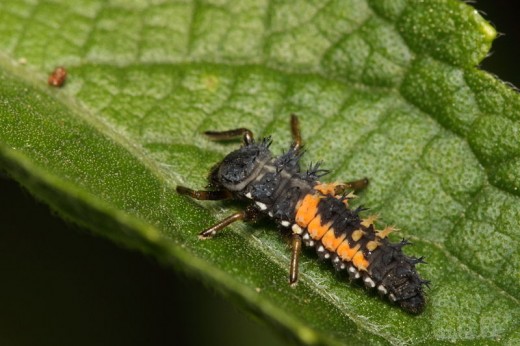
Ladybirds
Both the adult and larvae of ladybirds eat aphids. The larval stage of ladybirds eat even more aphids than the adults and can look quite different so it's a good idea learn how to recognise them both. The adult ladybirds will occasionally feed on pollen and nectar if their insect prey are not around or they're beginning to enter hibernation. The following plants can be used to help attract ladybirds to the garden.
Plants that attract ladybirds:
- Fernleaf Yarrow (Achillea filipendulina)
- Yarrow (Achillea millefolium)
- Blue Bugle (Ajuga reptans)
- Golden Alyssum (Aurinia saxatilis)
- Dill (Anethum graveolens)
- Yellow Chamomile (Anthemis tinctoria)
- Butterfly Weed (Asclepias tuberosa)
- Fourwing Saltbush (Atriplex canescens)
- Coriander (Coriandrum sativum)
- Queen Anne's Lace (Daucus carota)
- Buckwheat (Fagopyrum esculentum)
- Fennel (Foeniculum vulgare)
- Maximilian Sunflower (Helianthus maximiliani)
- Rocky Mountain Penstemon (Penstemon strictus)
- Sulphur Cinquefoil (Potentilla recta)
- Northern Cinquefoil (Potentilla villosa)
- Marigold (Tagetes tenuifolia)
- Tansy (Tanacetum vulgare)
- Dandelion (Taraxacum officinale)
- Spiked Speedwell (Veronica spicata)
- Hairy Pod Vetch (Vicia villosa)
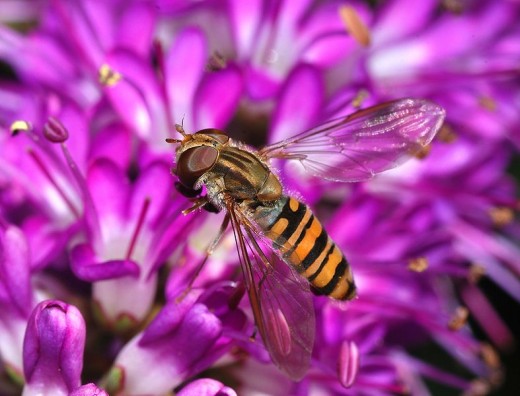
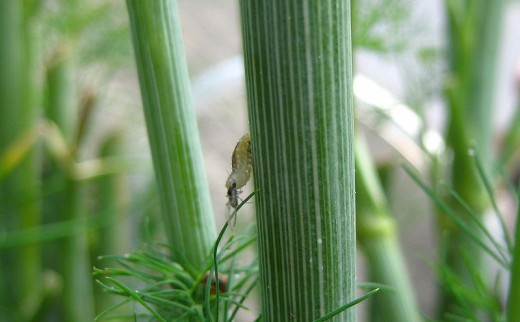
Hoverflies
The larvae of hoverflies are similar to other fly maggots only more mobile. The larvae have a voracious appetite for aphids. Hoverflies get their name from their remarkable ability to hover still in one place for an extended period of time. Adults of many species of hoverfly have stripes on their abdomen and superficially resemble bees or small wasps. The adults are good pollinators, they feed on nectar and can be attracted by planting a combination of the following nectar-rich plants.
Plants that attract ladybirds:
- Fernleaf Yarrow (Achillea filipendulina)
- Yarrow (Achillea millefolium)
- Blue Bugle (Ajuga reptans)
- Golden Alyssum (Aurinia saxatilis)
- Dill (Anethum graveolens)
- Yellow Chamomile (Anthemis tinctoria)
- Alpine Aster (Aster alpinus)
- Great Masterwort (Astrantia major)
- Fourwing Saltbush (Atriplex canescens)
- Caraway (Carum carvi)
- Coriander (Coriandrum sativum)
- Garden Cosmos (Cosmos bipinnatus)
- Queen Anne's Lace (Daucus carota)
- Buckwheat (Fagopyrum esculentum)
- Fennel (Foeniculum vulgare)
- Common Lavender (Lavandula angustifolia)
- Poached Eggplant (Limnanthes douglasii)
- Common Toadflax (Linaria vulgaris)
- Edging Lobelia (Lobelia erinus)
- Sweet Alyssum (Lobularia maritima)
- Lemon Balm (Melissa officinalis)
- Pennyroyal (Mentha pulegium)
- Spearmint (Mentha spicata)
- Wild Bergamot (Monarda fistulosa)
- Rocky Mountain Penstemon (Penstemon strictus)
- Parsley (Petroselinum crispum)
- Sulphur Cinquefoil (Potentilla recta)
- Northern Cinquefoil (Potentilla villosa)
- Orange Coneflower (Rudbeckia fulgida)
- Rockcress (Sedum spurium)
- White Stonecrop (Sedum album)
- European Goldenrod (Solidago virgaurea)
- Purple Betony (Stachys officinalis)
- Marigold (Tagetes tenuifolia)
- Feverfew (Tanacetum parthenium)
- Creeping Thyme (Thymus serpyllum)
- Spiked Speedwell (Veronica spicata)
- Zinnia (Zinnia elegans)
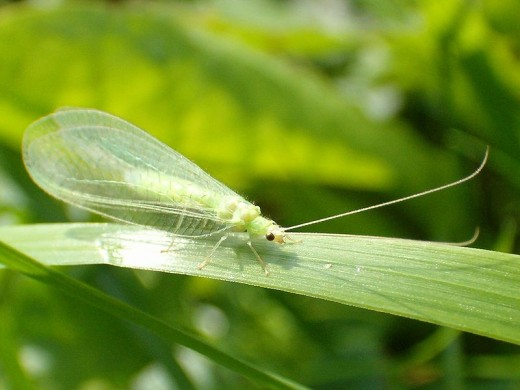
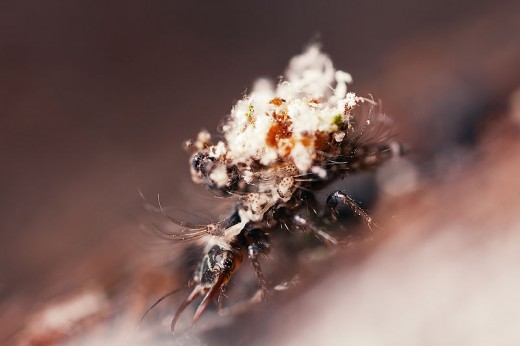
Lacewings
Green lacewing larvae feed on many pest insects including aphids. The larvae of many species of green lacewing camoflauge themselves with the corpses of aphids and other debris. The adults feed mostly on nectar and pollen and can be attracted into the garden by planting a combination of the following plants.
Plants that attract lacewings:
- Fernleaf Yarrow (Achillea filipendulina)
- Dill (Anethum graveolens)
- Angelica (Angelica gigas)
- Yellow Chamomile (Anthemis tinctoria)
- Fourwing Saltbush (Atriplex canescens)
- Caraway (Carum carvi)
- Coriander (Coriandrum sativum)
- Garden Cosmos (Cosmos bipinnatus)
- Queen Anne's Lace (Daucus carota)
- Fennel (Foeniculum vulgare)
- Maximilian Sunflower (Helianthus maximiliani)
- Tansy (Tanacetum vulgare)
- Dandelion (Taraxacum officinale)
Companion planting to repel aphids
There are many plants that aphids find distasteful and may actually help to repel them from the garden. Try growing one or a combination of the following around plants that frequently experience attacks by aphids:
- Aniseed (Pimpinella anisum)
- Coriander (Coriandrum sativum)
- Garlic (Allium sativum)
- Nasturtium (Tropaeolum majus)
- Onion (Allium cepa)
- Pennyroyal (Mentha pulegium)
- Spearmint (Mentha spicata)
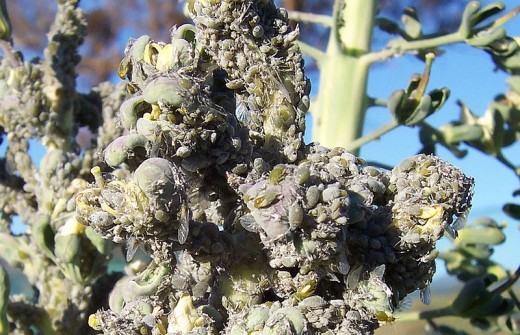
Tomato leaf aphid spray recipe
Tomato leaves are packed full of toxic alkaloids (plant defense chemicals) that are deadly to aphids. The following is an easy, cost-effective way to control aphids. This treatment reportedly does not harm beneficial insects so it's a good choice to use if they are present.
Ingredients:
- Two cups of leaves from your tomato plants
- Four cups of water
- A strainer
- A spray bottle
- Two mixing bowls or containers
Method:
- Place the tomato leaves into one of the containers, cover with two cups of water and allow it to steep overnight.
- Strain the mixture while pouring from one container into another.
- Add another two cups of water to the strained mix.
- Transfer the mix into a spray bottle for use.
Use:
Spray on any part of the plant where aphids are gathering, be sure not to miss any that are hiding under the leaves. People with allergies to members of the Solanaceae family (Nightshades, tomatoes, potatoes, chilis, bell peppers & eggplants) should not use this spray.
Garlic oil aphid spray recipe
The sulfurous compounds found within garlic act as natural pesticide, fungicide and antibiotic. The following recipe is an easy, cost-effective way to make use of the insecticidal properties of garlic. This treatment is non-specific and will kill beneficial insects also, so avoid spraying with this treatment if they are present. Either let them do their work or use the safer tomato leaf spray treatment.
Ingredients:
- Four cloves of garlic
- Two teaspoons mineral oil
- Two cups of water
- Extra water for diluting before application
- A strainer
- A spray bottle
- A couple of mixing bowls or containers
- A few drops of liquid dish-washing detergent.
Method:
- Mince or finely chop and crush the garlic cloves and mix with the mineral oil.
- Let the mix sit for a day to allow the garlic to infuse into the oil.
- Strain away the garlic and combine the garlic-infused oil with two cups of water and a few drops of liquid dish-washing detergent.
- Store and dilute as needed by mixing two tablespoons of the mix with two additional cups of water.
- Pour diluted mix into spray bottle ready for application.
Use:
Test this spray prior to use by spraying a small part of a leaf of the plant you want to treat and leaving it for a day. If the application site becomes yellow or shows signs of damage, the mix is too strong and needs to be diluted further with an additional cup of water. Test the newly diluted mix again and dilute further if needed. Once you are certain that the spray is diluted enough not to harm your plants you can spray anywhere the aphids have gathered, remember to look under the leaves also.
Hopefully by following some of these organic tips you'll be able to turn the tide of your battle with aphids, while still maintaining a healthy, biodiverse garden that is teeming with life.

